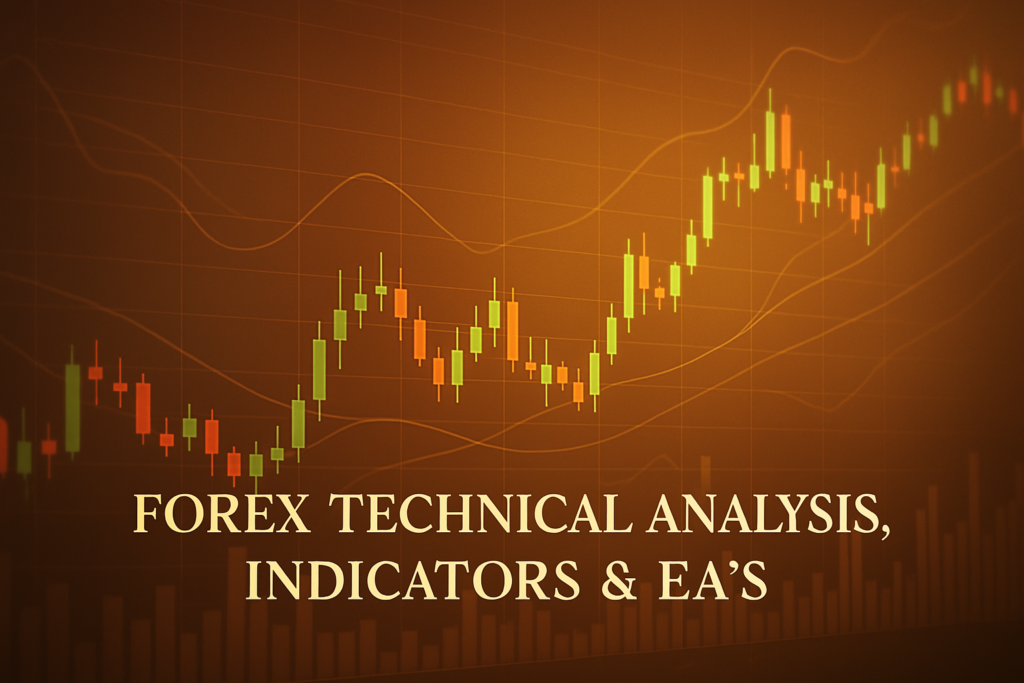
The 52 week moving average is essential for Forex traders, offering trend insights and aiding decision-making in volatile markets.
The 52 week moving average is a powerful tool in Forex trading. It helps traders identify trends and make informed decisions. By averaging the prices over the last year, it smooths out the noise in price movements, allowing traders to see the bigger picture. This is crucial in the volatile world of Forex, where prices can change rapidly.
However, many traders, both beginners and professionals, struggle to grasp the concept of the 52 week moving average. They may find it challenging to integrate it into their trading strategies or misinterpret its signals. Understanding this tool is essential for making better trading decisions and maximizing profits. In this article, we will explore the 52 week moving average in detail, providing you with insights and practical tips.
We will cover what a 52 week moving average is, its benefits and drawbacks, how to apply it on trading platforms, and various strategies to enhance your trading success.
For those looking to enhance their trading skills, there is a wealth of information about professional forex trading available online.
What is a 52 Week Moving Average?
The 52 week moving average is simply the average price of a currency pair over the last 52 weeks. Imagine you are looking at the price of the EUR/USD pair for the past year. By adding all those prices together and dividing by 52, you get the average price. This average helps traders understand the long-term trend of the currency pair.
Types of 52 Week Moving Average
There are different types of moving averages you can use. The most common ones are:
- Simple Moving Average (SMA): This is the basic average, adding up the prices and dividing by the number of periods.
- Exponential Moving Average (EMA): This gives more weight to recent prices, making it more responsive to price changes.
- Weighted Moving Average (WMA): Similar to EMA, but it uses a different weighting method.
How 52 Week Moving Average Smooths Out Price Action
The 52 week moving average smooths out the random fluctuations in price. Think of it like a filter that shows you the trend without the noise. For instance, if the price of a currency pair has sharp ups and downs, the 52 week moving average will provide a clearer view of whether the price is generally rising or falling.
Common Periods Used and Why
Traders often use the 52 week moving average because it covers a full year of data. This long-term perspective is valuable for identifying trends. However, some traders may also look at shorter periods, like the 20 or 50 week moving average, for a quicker response to price changes.
The History of 52 Week Moving Average: How It Became Popular
Origin of 52 Week Moving Average
The concept of moving averages has been around for decades. Traders started using the 52 week moving average as a way to analyze long-term trends. It became popular as more traders began to realize its effectiveness in smoothing out price data.
When Did Traders Start Using It Widely?
In the late 20th century, the 52 week moving average gained traction among traders. With the rise of technology and trading platforms, more people had access to this tool. It became a staple in many trading strategies, as traders sought to improve their decision-making.
Real-Life Stories
Many professional traders have credited the 52 week moving average for their success. For example, a trader might have noticed that the EUR/USD pair was consistently above its 52 week moving average, indicating a strong uptrend. By buying at this point, they could have captured significant profits as the price continued to rise.
Advantages and Disadvantages of 52 Week Moving Average
Advantages:
Here are some benefits of using the 52 week moving average:
- Helps Identify Trends Easily: It provides a clear picture of the long-term trend.
- Useful for Dynamic Support and Resistance: Traders can use it as a reference point for potential price reversals.
- Works Well for Crossover Strategies: It can be combined with other indicators to generate buy or sell signals.
Disadvantages:
However, there are also some downsides:
- lags behind price movements: Since it’s based on past data, it may not react quickly to sudden changes.
- Can Give False Signals in Sideways Markets: In a range-bound market, it may lead to confusion and losses.
How to Apply 52 Week Moving Average on MT4 & MT5
Step-by-step Guide to Adding 52 Week Moving Average on Charts
To apply the 52 week moving average on your MT4 or MT5 charts, follow these steps:
- Open your trading platform.
- Select the currency pair you want to analyze.
- Click on “Insert” in the top menu.
- Choose “Indicators,” then “Trend,” and select “Moving Average.”
- Set the period to 52 and select your desired type (SMA, EMA, etc.).
- Click “OK” to apply it to your chart.
Customizing 52 Week Moving Average Settings
You can customize the 52 week moving average to fit your trading style. Change the colors to make it more visible or adjust the type of moving average. Play around with the settings until you find what works best for you.
Saving Templates for Easy Application
If you find a setup you like, save it as a template. This way, you can easily apply the same settings to other charts in the future, saving you time and effort.
5 to 7 Trading Strategies Using Only 52 Week Moving Average
Strategy 1: All-Time Frame Strategy (M5 to D1)
This strategy works across various time frames. You look for the price above or below the 52 week moving average to determine the trend. If the price is above, consider buying; if below, consider selling.
Strategy 2: Trending Strategies
In a strong trend, use the 52 week moving average to confirm your trades. Buy when the price is above the moving average and sell when it’s below. This keeps you in sync with the market direction.
Strategy 3: Counter Trade Strategies
When the price moves too far from the moving average, it may be time to counter-trade. If the price is much higher than the 52 week moving average, a correction may occur. Look for selling opportunities in this scenario.
Strategy 4: Swing Trades Strategies
Use the 52 week moving average to identify swing trade setups. Wait for the price to touch the moving average and then look for a reversal signal to enter your trade.
5 to 7 Trading Strategies Combining 52 Week Moving Average with Other Indicators
Strategy 1: All-Time Frame Strategy (M5 to D1)
This strategy combines the 52 week moving average with the RSI indicator. When the RSI is oversold and the price is below the moving average, it may be a good buy opportunity.
Strategy 2: Trending Strategies
Combine the 52 week moving average with MACD. Look for a crossover above the moving average for a buy signal, and a crossover below for a sell signal. This helps confirm your trades.
Strategy 3: Counter Trade Strategies
This strategy uses the 52 week moving average with Bollinger Bands. If the price is at the upper band and above the moving average, consider selling. If it’s at the lower band and below the moving average, consider buying.
Strategy 4: Swing Trades Strategies
Combine the 52 week moving average with Stochastic Oscillator. Look to enter a buy position when the oscillator is below 20 and the price is touching the moving average.
For those interested in Forex, the USDJPY Forecast May 16, 2025 offers insights into market trends.
Top 10 FAQs About 52 Week Moving Average
1. What is a 52 week moving average?
A 52 week moving average is the average price of a currency pair over the last year.
2. How do I calculate it?
Sum the prices for the last 52 weeks and divide by 52.
3. Why is it important?
It helps traders identify long-term trends and make informed decisions.
4. What types of moving averages are there?
Common types include Simple, Exponential, and Weighted moving averages.
5. How do I apply it on trading platforms?
You can easily add it through the indicators menu in MT4 or MT5.
6. Can it be used for short-term trading?
Yes, but it’s primarily a long-term trend analysis tool.
7. What are the advantages of using it?
It helps identify trends and serves as dynamic support and resistance.
8. Are there any disadvantages?
It may lag behind price movements and can give false signals in sideways markets.
9. How often should I check it?
Regularly, especially if you are actively trading or monitoring long-term trends.
10. Can I combine it with other indicators?
Absolutely! Combining it with other indicators can enhance your trading strategy.
Conclusion
In summary, the 52 week moving average is a valuable tool for Forex traders. It helps identify long-term trends and provides insights into potential buy and sell opportunities. Understanding how to use it effectively can enhance your trading strategy and decision-making.
Remember to test different strategies and setups before committing real money. With practice and patience, you can harness the power of the 52 week moving average to your advantage.
Looking to go beyond the basics? This resource offers deeper insights FXStreet, OANDA
Expand Your Knowledge
- 📌 Forex Trading Learning Road Map
- 📌 Forex Trading Course with no Fees
- 📌 Forex Trading Issues, Problems, and Solutions
- 📌 Forex Daily Forecast & Live Updates
- 📌 Forex Fundamental & News Analysis: Tomorrow’s Market Movers & Trade Opportunities
- 📌 Forex Education Hub: Learn & Profit
- 📌 Forex Technical Analysis, Indicators & EA’s
Start Trading Today
Ready to take your forex trading to the next level? Open an account with Exness, one of the most trusted platforms in the industry. 👉 Sign Up Now and trade with confidence!
My recommended broker stands out with ultra-low spreads for beginners, instant withdrawals, and zero spread accounts for pro traders.
Trusted since 2008, lightning-fast execution, no hidden fees, and a secure, transparent trading environment—giving you the edge you need to succeed. 🚀
Watch this helpful video to better understand 52 week moving average:
In this video, the focus is on the 50-period moving average, a popular tool used by professional traders to enhance their trading strategies. A moving average is calculated as the average price of an asset over a specified number of periods, in this case, 50. While using the 50-period moving average can offer traders a directional bias, it’s important to understand both its advantages and disadvantages. One of the main drawbacks is that it is a lagging indicator, which means it reacts to price changes rather than predicting them. This can lead to missed opportunities since the moving average reflects past price action. However, professional traders use the moving average to identify momentum shifts and potential trend reversals, making it a valuable tool for determining entry and exit points in trades.
The video also emphasizes the importance of using the 50-period moving average as a guide rather than a definitive signal. For instance, traders often look for stocks that are trading above both the 50 and 200-period moving averages, indicating a bullish trend. The presenter discusses how they personally manage risk by using the 50-period moving average as a stop-loss point when in a winning trade, allowing them to lock in profits while giving the trade room to grow. It’s crucial to remember that while moving averages can provide insights, they should not be solely relied upon. Traders are encouraged to combine this tool with other market analyses, such as company-specific news and broader market trends, for a well-rounded trading strategy. The video concludes by inviting viewers to join Trader TV Live for more tips and live trading sessions to further refine their trading skills.
In the realm of trading, one common challenge traders face is when their broker prevents stop-loss adjustments on open trades. This situation can be frustrating and may lead to significant losses if not managed carefully. Understanding how to navigate this challenge is essential for effective risk management while trading.
YouTube Video Library: Related Videos
10 SMA + 20 SMA with 200 SMA | Swing Trading Strategy | Moving average Crossover
Stock Trading: Moving Averages
How To Add Moving Averages on Tradingview | Trading Strategy
20 EMA Trading #stockmarket #trading #movingaverage #candlestick #ytshort
How To Use A Moving Average Crossover To Buy Stocks (Swing Trading Strategy for Beginners)
Moving Average & Exponential Moving Average | SMA- EMA Trading Strategy | Stock Market Training
Will Google Reach a new 52-Week high? GOOG #shorts #daytrading #stockmarket #invest #finance #money
Note: The video above is embedded from YouTube and is the property of its original creator. We do not own or take responsibility for the content or opinions expressed in the video.


